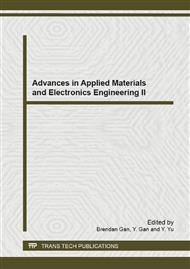p.194
p.198
p.203
p.207
p.212
p.217
p.222
p.226
p.230
Assessment of the Influence of Carbon Absorption Efficiency of Plants with High Concentration Sulfur Dioxide
Abstract:
The experiment tests carried out on the sulfur dioxide (SO2) will reduce the amount of carbon dioxide (CO2) into the plant body. When the plants absorb CO2, SO2 enters the stomata at the same time, and the photosynthesis rate will immediately fall. The carbon absorption potential showed decreased as SO2 concentration increasing. However, after 600 ppb SO2 gas fumigated for 48 hours, Hibiscus tiliaceus had the most carbon absorption potential reducing rate as 76% and the least influence by this concentration was Acacia confusa which reduced 2% carbon absorption potential. When the fumigation concentration rose to 1000 ppb, except the leaves of Camellia axillaries had all fallen, the Hibiscus tiliaceus also showed the most variance of carbon absorption potential as 81% reducing than before fumigation and the Hibiscus taiwanensis was the second with 65% reducing rate. As the fumigation concentration rose to 2000 ppb, the Camellia axillaries, Hibiscus taiwanensis, Viburnum odoratissimum and Hibiscus tiliaceus could not tolerate the high SO2 concentration environment and the leaves all fell away. The carbon absorption potential reduced more significant than two other fumigation concentration. The most variance was Palaquium formosanum which with 92% decrease. The Neolitsea parvigemma and Leea indica also had 85% and 84% reduce rate than before fumigation, respectively.
Info:
Periodical:
Pages:
212-216
Citation:
Online since:
April 2013
Authors:
Keywords:
Price:
Сopyright:
© 2013 Trans Tech Publications Ltd. All Rights Reserved
Share:
Citation:


